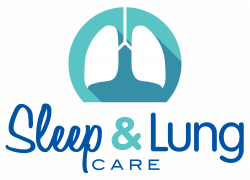Sleep study
To diagnose Sleep Apnoea or other sleep disorders, a patient must undergo a polysomnography (sleep study). This can be done in a sleep lab, requiring the patient to spend the night in-lab, or at home.A sleep study can help determine whether you snore or stop breathing (apnoea) and if so, how frequently and severely. A sleep study can monitor your movements to detect any sleep-related seizure disorders or sleep-related movement disorders, such as periodic limb movement disorder. On a more basic level, it can analyse your sleep patterns and help you learn—in more detail—about the quantity and quality of the sleep that you’re getting.
What is a Sleep Study?
It’s a test that measures how well you sleep and determines whether you have any sleep problems, as well as how severe any sleep problems are. Since people aren’t typically aware of their breathing, movements, and other habits while they are asleep, a sleep study will help a doctor examine their quality of sleep. Electrodes on wires are attached to your head and body to monitor your brain waves, Rapid Eye Movements (REM), oxygen levels, breathing patterns, respiratory efforts, snoring, muscle tone and leg movements, heart rate, and more. Elastic belts also may be wrapped around your chest and abdomen to measure breathing. Most people get used to it all very quickly.EEG (electroencephalogram) to measure and record brain wave activity
EMG (electromyogram) to record muscle activity such as face twitches, teeth grinding, and leg movements; it also helps in determining the presence of REM stage sleep.
- EOG (electro-oculogram) to record eye movements; these movements are important in determining the different sleep stages, particularly REM stage sleep.
- ECG (electrocardiogram) to record heart rate and rhythm
- Nasal airflow sensor to record airflow
- Snore microphone to record snoring activity
- Oximeter- measures oxygen levels
The data obtained from these reveals a detailed picture of your unique sleep patterns—including how much time you spend in light and deep stages, whether you’re receiving enough oxygen, how often you awaken (even slightly), and whether sleep is disrupted by factors such as arm and leg movements.
There are different types of sleep studies. Diagnostic studies are used to evaluate whether you have a sleep disorder. A CPAP (a mask worn over the nose) study is performed to determine the ideal pressure settings for patients who are determined to have sleep apnoea from their initial sleep study. This is usually done in a sleep lab.
A sleep study produces hundreds of pages of information about your night and it will give your doctor the big picture about your sleep, plus lots of important details. It usually takes about two weeks for the sleep specialist to review it and send the results to your doctor.
CONTACT US TODAY
If you have any questions or would like to make an appointment to discuss your Sleep or Lung related problem, please fill out the form and submit.
